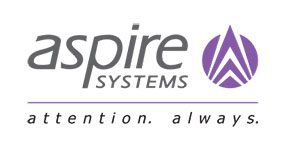
A successful business harnesses the power of its entire workforce, technology and processes to deliver exemplary service. Here’s where service management tools make a difference. They improve collaboration by involving all teams and departments and bring much-needed transparency into processes. Though IT is at the core of service management, it expands to cover all aspects of the organization. When combined, they collectively increase productivity, standardize operations and enhance accountability.
Modern service management tools offer department- and function-specific products along with advanced automation and AI/ML capabilities. With automation, cases are routed automatically matching the user’s requirement with the agent’s expertise, after which intelligent workflows take over. They can guide even a brand-new agent through a process with ease, slashing ticket processing time.
The Basics Of Effective Service Management
Risk Mitigation
To provide a seamless service, a business must first be in control of a well-oiled service management infrastructure. This can start with continuous monitoring of the IT infrastructure, helping to predict or flag any potential risk events. A risk event could range from a lost phone to a hacking attempt. Implementing the right protocols in case of such events helps the business mitigate the risk without affecting service delivery. With continuous monitoring, the company can prepare itself by allocating necessary staff and resources to avoid service disruption, in case of unavoidable but predictable threats.
As they grow increasingly dependent on AI/ML powered tools, businesses often overlook the human factor when it comes to maintaining smooth flow of service and cultivating a healthy risk appetite. An observant work culture, with trained staff armed with a user-friendly reporting platform, can help identify potential risk events. They are also essential for effective communication, be it top-down or bottom-up and across departments in case of an event.
Monitoring Key Metrics
The vast reach of service management makes measuring its impact a difficult task. Traditionally, key performance indicators include customer satisfaction scores, average response time, service availability, average resolution time, cost per ticket and first-contact resolution rate. A holistic view of KPIs allows enterprises to prioritize resources, anticipate trends, identify areas of improvement and eliminate common bottlenecks before they affect service. Many platforms now come with in-built data analytics tools that give stakeholders insights into important metrics. This eliminates the need for multiple third-party tools and simplifies data storage and access.
Service Reviews
No quest for improvement is devoid of a service review. For an effective service review, businesses must first identify the right metrics, such as performance, validity and costs incurred per service, to measure the strength of their tools and strategies. The review team must also be included in discussions on business goals to check if the IT infrastructure aligns with the roadmap. Assembling the right team equipped with the right resources can also affect the quality of the review. The enterprise must decide how often reviews are required and set aside enough time for the team to conduct and prepare their review. Implementing recommendations such as upgrades also eat into the business’ time and can affect the free flow of service.
Managed Services Providers – Expert Help For Greater ROI
While essential, the review process can rack up spending and considerably hamper operations. A dedicated team to monitor and measure service quality is simply not feasible or cost-effective. A Managed Services Provider simplifies these operations, freeing up the enterprise to focus on the core business. By employing the offshore model for these crucial processes, businesses can cut their support costs by at least 30%. Simply put, employing a Managed Services Provider ensures world-class services without busting the budget.
Picking a partner may be the most important and complicated step when moving to the offshore model. With the right partner on board, enterprises can slash operating costs while gaining access to a larger pool of experts. Finding that partner is easier said than done — reliability, quality of work and value matter most. The managed services provider must have an in-depth understanding of the company’s strategy and create an efficient roadmap for IT support while ensuring greater ROI.
What the Right Partner Delivers
An experienced Managed Services Provider helps tailor and scale an enterprise’s IT estate in accordance with the business goals. They recommend areas for increased automation to reduce errors from manual processes and improve the quality of service. Studies found that delays in about 90% of all IT projects can be traced back to manual testing. For instance, automated testing expedites the software delivery lifecycle by reducing human intervention. Low-code/no-code tools also empower citizen developers to build intuitive apps at a third of the cost with room for upgrades and enhancements.
Experts can quickly pick up on unnecessary expenditures and provide recommendations on curbing such spending. It is why breadth and depth of experience is crucial for a Managed Services Provider. For instance, software license usage can eat into budgets when not optimized. Many employees may not be using the license effectively or may have moved on to different roles that don’t require access to the software. Tracking and identifying such users and then revoking unused licenses are essential for optimal license usage. Collecting and analyzing this data can prove quite the task as it is usually scattered across several spreadsheets and platforms. Having done this before, a Managed Services Provider knows where to look and can zero in on these common issues.
An optimized IT infrastructure is the greatest advantage a business realizes with a Managed Services Provider. With an efficient and intelligent platform running the show, the day-to-day processes that make up effective service management are taken care of so the business can focus on innovation.
Aspire Systems is a global technology services firm and a trusted technology partner for its customers. We provide an array of services including enterprise integration, digital services, software engineering, testing and infrastructure support. A Premier Partner of ServiceNow, Aspire helps global enterprises fast-track their ServiceNow implementation and optimize their instance. Our capabilities include ServiceNow consultation, end-to-end implementation and enhancement services with expertise in ITSM, ITOM, ITBM, SecOps, PPM etc. Over a decade, we’ve executed 100+ projects across all of ServiceNow’s modules. We’re also among the elite few partners certified App Engine Competent by ServiceNow. To know more about Aspire’s ServiceNow Managed Services offering, visit: https://ter.li/flicjc or write to us at [email protected]


























